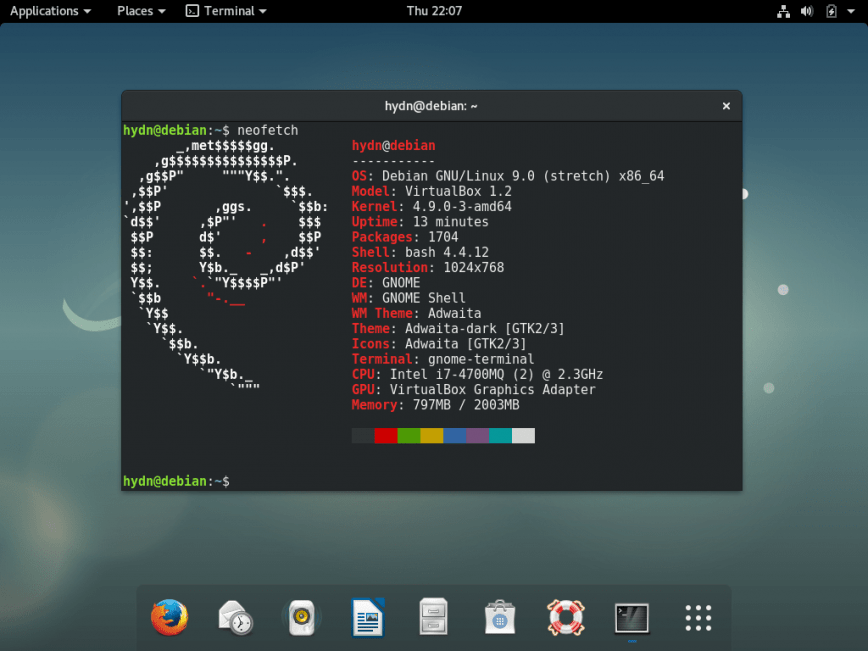The most popular Linux distribution since 2011, computed by the page-hit rankings at Distrowatch, has been Linux Mint. Mint's popularity follows from its ease of installation and its shallow learning curve — and because it is based on the long-term support release of Ubuntu, which provides stability and support.
- Download Uefi Boot Firmware
- Debian Uefi Boot Iso Download Windows 7
- Uefi Boot Manager Download
- Debian Uefi Boot Iso Download Free
Use a Linux Mint USB drive as a way of testing Linux Mint to see if it is suitable for your needs. If you like it, the live file system on the Linux USB device supports installation to your hard drive, or even dual booting of Linux Mint and Windows 8 and 10.
Before PCs shipped with Unified Extensible Firmware Interface technology, spinning up a blank Linux CD, DVD, or USB drive was straightforward, as was booting with the media you created. Modern PCs with UEFI — because it's a security layer that modern PCs use to protect the operating system's communications with your PC's hardware — require a few extra steps to work correctly with Linux USBs.
What You Will Need
To create a UEFI-bootable Linux Mint USB drive, you'll need:
- A blank USB drive
- A computer equipped with Windows 8.1 or Windows 10
I knew the Debian Jessie installer would provide everything that is required to handle an UEFI-based system, but it took me a few tries to get it to boot. First, I tried the standard netboot image, but the firmware did not want to boot from a USB stick, probably because the image requires a MBR-based bootloader. The DEBIAN LIVE image boots as legacy BIOS and doesn't contain UEFI (examined the ISO with 7zip and no EFI partition exist). The install medium must be booted as UEFI when installing an UEFI O/S. This is so the installer can be aware of and update the existing EFI partitions. This Video is about how to create a UEFI Bootable Debian 64-Bit USB using Rufus with Multiple Debian ISOs. After clicking on start Rufus asks to select a mode in which the image (ISO File) is.
The disc image (a single large file with a name ending in .ISO) represents a direct copy of what the contents of a CD would be, if a CD with Linux Mint were ripped to a single file. For that reason, you need a tool like Win32 Disk Imager, which executes ISO-to-USB for your Linux USB.
Create the Linux Mint USB Drive
Format a USB Drive
Prepare the drive to accept the ISO-to-USB Linux transfer.
- Open Windows Explorer and right-click the drive letter assigned to the drive.
- Click the Format option on the menu.
- When the Format Volume screen appears, verify that the quick format option is checked and the file system is set to FAT32.
- Click Start.
Write Linux Mint Image to the USB Drive
After the USB drive has been formatted, transfer the ISO file to it.
- Start Win32 Disk Imager.
- Set the drive letter to the USB drive you prepared.
- Click the folder icon and locate the Linux Mint ISO file you've already downloaded. You will need to change the file type to show all the files. Click the ISO so that the path appears in the box on the main screen.
- Click Write.
Turn Off Fast Boot
Download Uefi Boot Firmware
To boot a UEFI-bootable Ubuntu-based USB drive (like Linux Mint), you must turn off Fast Startupfrom within Windows.
- Right-click the Start button or press Win-X.
- Choose Power Options.
- When the power options screen appears, click the second menu item on the left-hand side: Choose what the power button does.
- Find the Shutdown Settings section at the bottom of the list. Ensure the Turn on Fast Startup checkbox is unchecked and click Save Changes.
Debian Uefi Boot Iso Download Windows 7
If the box is grayed out, enable it by clicking the link at the top that reads, Change settings that are currently unavailable.
Boot From a UEFI-Bootable Linux Mint USB Drive
After you've disabled fast-startup mode in Windows, reboot your PC.
- To boot into Linux Mint, restart your computer while pressing the Shift key.
- When the UEFI boot menu appears, choose the Use a Device option and select USB EFI Drive.
Uefi Boot Manager Download
If you don't see the blue UEFI screen to choose to boot from EFI, try rebooting your PC and forcing it to boot from the USB drive during system start-up. Different manufacturers require different keypresses to access this start-up customization feature:

- Acer - F2 or delete
- Asus - F2, F9, or delete
- Compaq - F10
- Dell - F2
- Emachines - Tab or delete
- HP - Escape, F1, or F10
- Lenovo - F1 or F2
- NEC - F2
- Packard Bell - F1 or F2
- Samsung - F2 or F10
- Sharp - F2
- Sony - F1, F2, or F3
- Toshiba - Escape, F1, F2, or F12
/Windows 7 - FreeBsd - Red HatCentOS LVM (Debian GParted).png)
Writing a Live System to Disk
Debian Uefi Boot Iso Download Free
After you've launched Linux Mint from USB and have explored the live file system, you can either continue to use the USB drive to launch a Linux session when you need it, or you can use Mint's own tools to transfer the Linux operating system to your PC's hard drive.
Free windows 7 home premium sp1 64 bit iso download full. Black and yellow mp3 song download. When you install to hard disk, the bootloader automatically addresses UEFI compatibility on your behalf. You do not need to keep Fast Startup disabled in Windows to dual-boot into a Linux Mint system.